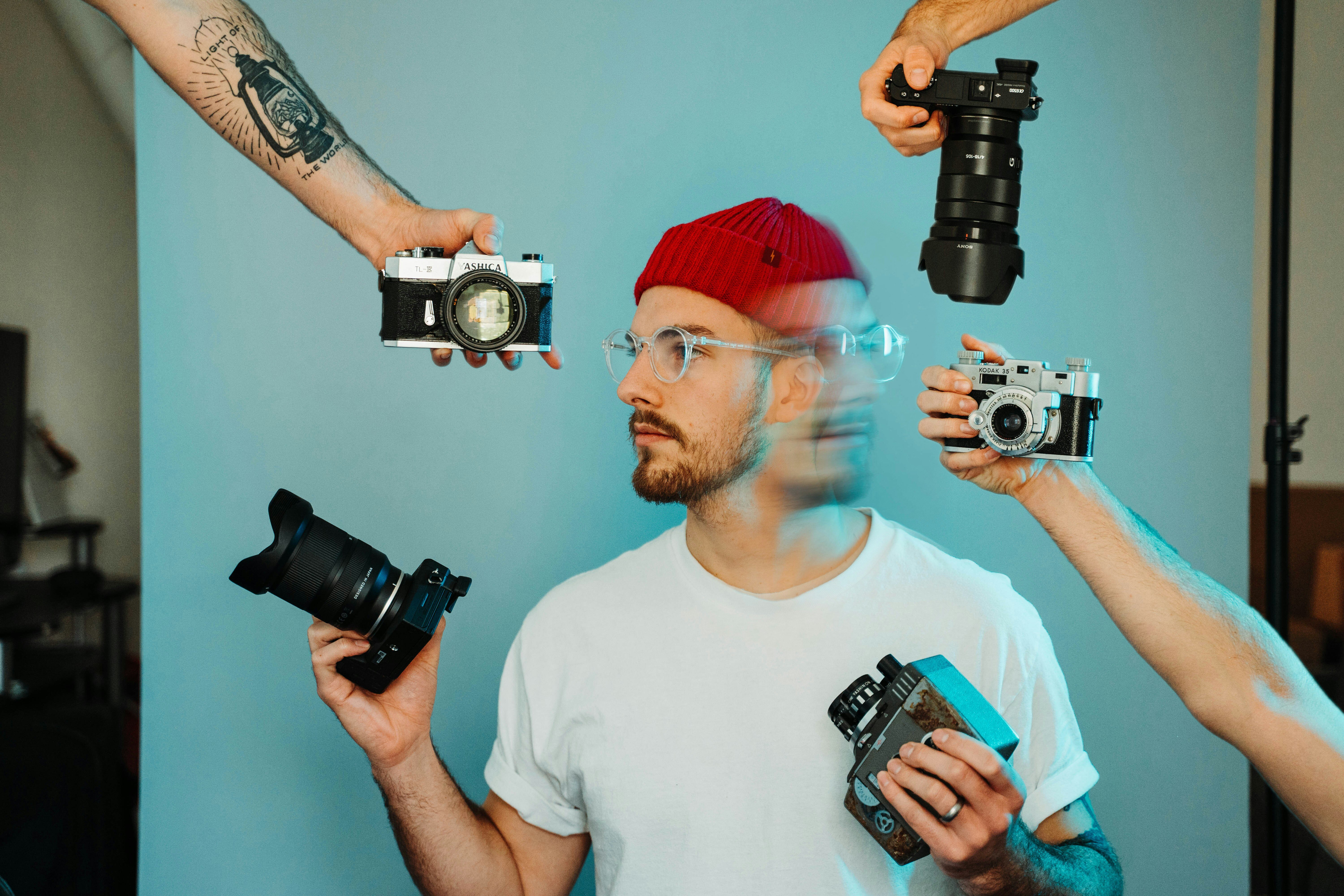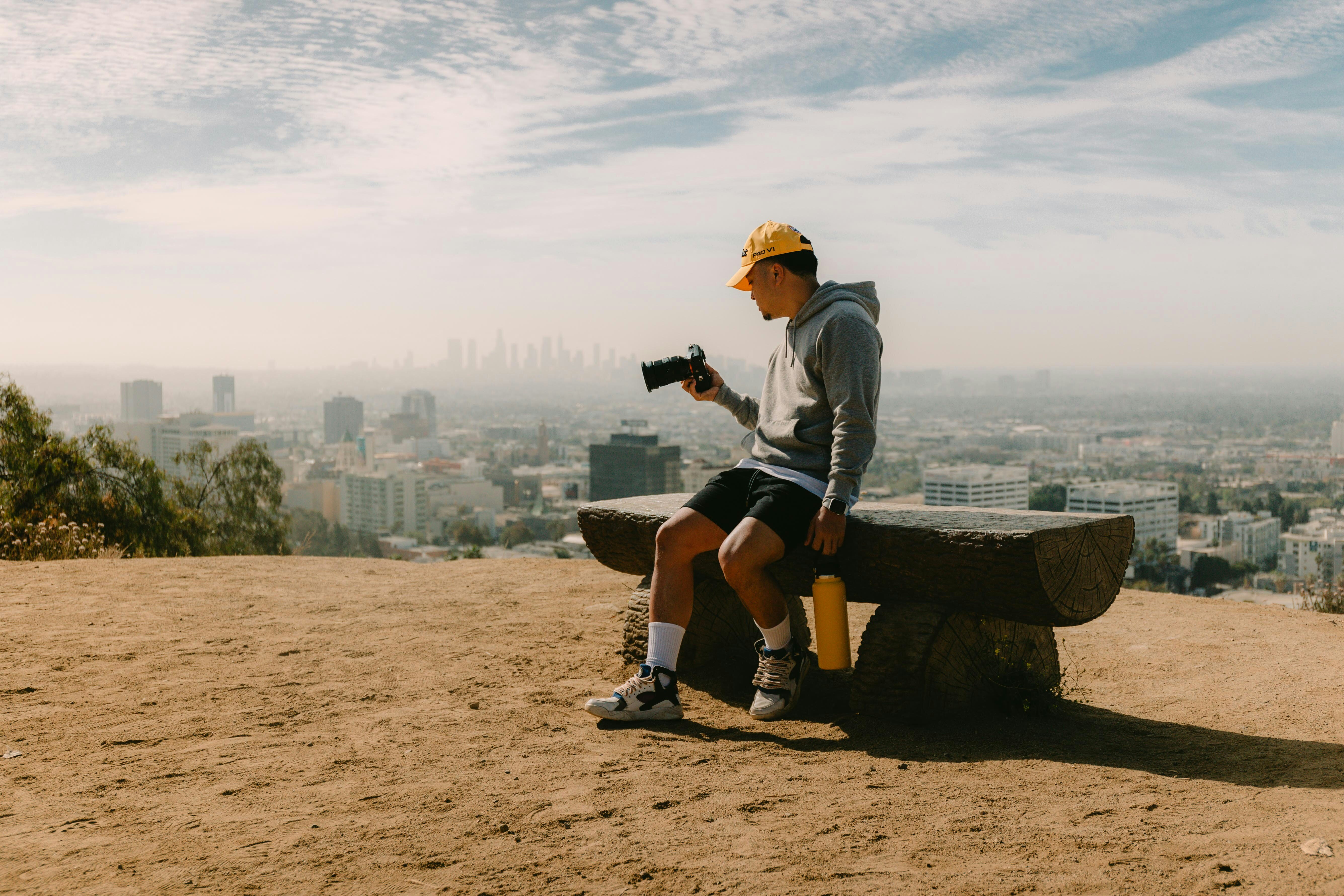Table of Contents
Introduction
Embarking on your photography journey is an exhilarating experience, filled with the promise of capturing compelling images that evoke emotion and tell stories. This comprehensive guide is designed to introduce you to the essential photography basics, ideal for beginners who are just starting out. In addition to learning how to take great photos, it's also important to know how to showcase them effectively. That's where Portfoliobox comes in—it's the best online portfolio builder for photographers looking to highlight their work professionally.
What Are Photography Basics?
Photography basics refer to the fundamental principles and techniques that every photographer should understand. These include camera settings, composition, lighting, and photo editing. Getting a grasp on these essentials is the first step in becoming proficient in photography for beginners.
The Importance of Learning Photography Basics
Understanding the basics forms the foundation of all great photography. It allows beginners to develop their technical skills and artistic vision. Whether you're interested in portrait, landscape, or street photography, the principles remain the same. By mastering these, you will be able to control the outcome of your images and eventually develop your unique style.
The Role of Light in Photography
Understanding light is crucial in photography. Light affects the mood, texture, and depth of your photos. Beginners should start by observing how light interacts with subjects at different times of the day and in various environments. Experimenting with natural light and learning how to manipulate it or use artificial lighting effectively can drastically improve the quality of your photos.
Essential Equipment for Beginners
To get started in photography, you'll need some basic equipment. Here is a simple list for beginners:
- Camera: DSLR, mirrorless, or compact
- Lenses: A prime lens like a 50mm and a zoom lens like a 24-70mm
- Tripod: Essential for stable shooting conditions
- Memory Cards: Choose high-capacity and fast cards for best performance
- Camera Bag: Protect and organize your gear

Choosing Your First Camera
Choosing the right camera is a pivotal decision for beginners. While smartphones can take impressive photographs, a dedicated camera will give you more control over settings and produce higher quality images. Decide between a DSLR and a mirrorless model based on what feels comfortable and fits your budget. Remember, the best camera for photography basics is one you will use regularly.
Understanding Camera Settings
| Setting | Purpose | Tips |
|---|---|---|
| Aperture | Controls the amount of light and depth of field | Lower f-numbers for more light |
| Shutter Speed | Captures the duration of exposure | Faster speeds for less blur |
| ISO | Adjusts the camera’s sensitivity to light | Lower ISO for less noise |
Mastering the Exposure Triangle
The Exposure Triangle—aperture, shutter speed, and ISO—is a basic concept that every photographer should understand. It's about balancing these settings to achieve the right exposure, depending on the lighting conditions and the effect you want to achieve. Understanding this will significantly enhance your capability in photography for beginners.
How to Use Portfoliobox as a Photography Portfolio Builder
Portfoliobox makes it simple and effective for photographers to create online portfolios. It is designed to be intuitive, allowing you to focus on showcasing your work beautifully without needing to code.
Benefits of a Strong Online Portfolio
A strong online portfolio is your gateway to gaining exposure and attracting clients. It serves as your professional front, showcasing your skills and style. This is especially important in photography, where visual impressions make a significant impact. Portfoliobox offers a plethora of customizable templates that make your work pop.
Why Choose Portfoliobox for Your Photography Portfolio?
Here are five compelling reasons to use Portfoliobox:
- Ease of Use: User-friendly interface with no coding necessary.
- Customization: Extensive design options to reflect your personal style.
- SEO Tools: Integrated tools to help your website rank better in searches.
- Responsive Design: Looks great on both desktop and mobile.
- Client Galleries: Secure galleries for client viewing and approval.
Creating Your First Photography Portfolio with Portfoliobox
Follow these steps to get your portfolio up and running on Portfoliobox:
- Sign Up: Create your account.
- Choose a Template: Pick one that fits your style.
- Upload Photos: Showcase your best work.
- Customize Pages: Tailor the look and feel of your site.
- Optimize for SEO: Implement keywords and meta descriptions.
- Publish: Go live and share your portfolio with the world.
Expanding Your Skills with Advanced Techniques
Once you've grasped the basics, it's time to explore more advanced photography techniques such as long exposure, HDR photography, and macro photography. These techniques can add depth and intrigue to your portfolio, showcasing your growing skills.

Conclusion
As you delve into the world of photography, remember that learning photography basics effectively and creating a striking photography portfolio are both critical to your success. Portfoliobox provides an exceptional platform for photographers to display their work, ensuring that your skills are showcased in the best light. With the right tools and knowledge, the art of photography for beginners can be demystified, paving the way for a fulfilling and successful photographic journey.
Frequently Asked Questions (FAQ)
1. What are the key components of photography basics for beginners? Photography basics include understanding camera settings like aperture, shutter speed, and ISO, as well as mastering composition and lighting techniques. For beginners, gaining a solid foundation in these areas is crucial for developing advanced photography skills.
2. How can beginners create a professional photography portfolio? Beginners can create a professional photography portfolio by selecting their best works and using an online portfolio builder like Portfoliobox. It's important to choose a platform that offers customizable templates and SEO tools to enhance online visibility and attract potential clients or audiences.
3. Why is Portfoliobox considered the best online portfolio builder for photographers? Portfoliobox is highly regarded because it specifically caters to the needs of photographers and creative professionals. It offers user-friendly tools for customization, responsive designs that look great on all devices, integrated SEO capabilities, and excellent client gallery options, making it a top choice for photographers.
4. What should I include in my first photography portfolio? Your first photography portfolio should include a variety of your best images that showcase your skills and style. It's advisable to include works that reflect a range of techniques and subjects to demonstrate your versatility. Also, ensure each image is accompanied by a brief description or a story that adds context and depth.
5. How important are SEO tools in building a photography portfolio online? SEO tools are vital in building a photography portfolio online because they help improve the visibility of your portfolio on search engines. Tools like keyword optimization, meta descriptions, and alt text for images ensure that your portfolio not only reaches a wider audience but also ranks well in search results.












